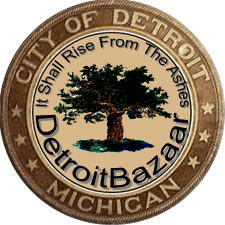Why the Detroit Zoo matters
In 1911 a handful of respectful Detroiters formed the Detroit Zoological Society and in 1914 bought 220 acres of land between Dearborn and Ecorse near the River Rouge where they planned to build a world-class zoo. This land that they had purchased was desirable to Henry Ford, and knowing that they could turn a quick profit, the Zoological Society sold this land to the Ford Motor Company a year later. With the profit they then purchased 150 acres of land north of Six Mile near Palmer Park. A year later they sold this land for a profit as well, and in 1916 purchased farmland on the current site of the Detroit Zoo. The land sat for the next 8 years during negotiations with the city and finally in 1924 construction began.
One building was erected within a year, but the design was not well received, so in 1925, Heinrich Hagenbeck, the director of the world famous Hagenbeck Zoo in Hamburg, Germany, was brought in to oversee the design. It all paid off and on August 5, 1928 the gates opened to the public. It seemed as if everyone wanted a first glimpse of this new attraction, which is said to have attracted some 120,000 to 150,000 people entering on the ceremonial opening day.
Despite how well things seemed to be going at the Detroit Zoo, our country was not doing as well; in 1929, the Great Depression was upon us. Admission into the zoo remained free, and the zoo was kept running by donations to the Society, a nickel ride on Paulina the elephant, a nickel ride on the miniature railroad system, and for ten cents, patrons could watch the famous 4 year old chimp, Jo Mendi, roller skate, walk a rope, eat with a spoon and wave goodbye to his fans. Unfortunately by 1932 the zoo was also forced to start charging for parking as a means of income.
This was still early in the history of the Detroit Zoo, but the Society knew that they must build a tradition for the public. Although many things have changed and decades have passed since the humble beginnings of the zoo, we need to keep this institute alive for our future generations. Let’s hope that the reports in the upcoming week will be good news.


3 Comments:
Very well written piece. It's nice to read about local history. Let's hope all works out with the zoo.
Yeah, good job with this piece. I REALLY hope they keep the zoo open. I couldn't bear another one of my favorite childhoood destinations disappearing. First boblo and now this:(
Keep the zoo open and the animals a place to call home!
Note from Derrick May: "Please join me at Volume and help support the Detroit Zoological Society. Wild Kingdom April 8, 2006"
Note: 'Volume' is for those interested in the music Derrick May makes.
Details: April, 8 2006 at Wild Kingdom at Volume Detroit: A Detroit Zoological Society Benefit
205 W. Congress, Detroit, MI 48201
"Wild Kingdom! A benefit for the Detroit Zoological Society."
Post a Comment
<< Home